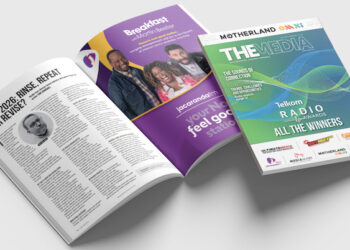The ROOTS 2013 survey has revealed that racial profiles in South Africa’s urban areas continue to shift.
The latest instalment of ROOTS, conducted by TNS Research Surveys and launched by Caxton CTP Printers & Publishers last month, is significant given the size and scale of the project. The 2010 research project involved approximately 23 000 interviews while the 2013 release saw the sample swell to 28 500. This makes it one of the largest in the country providing marketers, retailers and advertisers with significant intelligence at a local level.
According to Jacqui Bessinger, NAB’s ROOTS project head, 2010 ROOTS research showed that racial profiles in outlying towns such as Polokwane, Witbank and Ladysmith had begun to shift as the number of black Purchase Decision Makers (PDMs) living in these areas increased since 2007. This trend has continued into 2013.
In Polokwane, for instance, the number of black PDMs living in the suburban areas has risen to 64% in 2013, compared to 58% in 2010 and 30% in 2007; whilst the number of Indian PMDs has risen to 7%, compared to 1% in 2007.
“We are seeing big shifts in some of the metro areas as well. In Berea, in KwaZulu-Natal for example, the number of Black PDMs has risen from 33% in 2010 to 53% in 2013,” says Bessinger. “Areas across the country continue to show increases in the number of black PDMS.” The table below outlines some of the highlights:
| Suburb | 2007 | 2013 |
| Midrand | 53% Black
83% LSM 8-10 |
62% Black
79% LSM 8-10 |
| Milnerton/ West Coast | 8% Black
86% LSM 8-10 |
13% Black
85% LSM 8-10 |
| Kempton Park | 35% Black
74% LSM 8-10 |
47% Black
88% LSM 8-10 |
| Polokwane metro suburbs | 30% Black
74% LSM 8-10 |
64% Black
54% LSM 8-10 |
| Centurion PTA | 14% Black
78% LSM 8-10 |
43% Black
87% LSM 8-10 |
Shifts are also evident in other traditionally Afrikaans-speaking areas like Pretoria East and Brakpan. In PTA East, for example, the number of black households has increased from 9% in 2007 to 31% in 2013; whilst the number of households falling into the LSM 8-10 segment has risen from 77% in 2007 to 91% in 2013.
“Racial shifts are highly significant to marketers and business. If areas like the suburbs in Pretoria are changing dramatically, manufacturers and retailers need to be making sure they’re in touch with these ‘new’ communities,” adds John Bowles, Joint MD at NAB.
“Marketing is all about the balance between physical and mental distribution. If you have a brand for a certain market but are not aware of where they are living, you could miss the boat on a major opportunity! Similarly, if you’re after a specific market and your brand/ store is not out there, you need to become available urgently.”
Pre 2000, South Africa was a country split racially in terms of dwelling. The 2013 landscape sees a much different picture where previously white dominated suburbs are reflecting SA’s true urban demographic landscape. The destination suburbs where South Africa’s black households are moving to are spread across the country’s urban zones. Although the township households are predominantly black and have a lower household income to that of the suburbs, there are some interesting insights when it comes to black household income living in the suburbs and metro towns.
“Some suburbs where black households are living earn a lower or higher income to that of other races in the same suburbs or towns. In JHB North for example, black households earn far less to that of their neighbours, whilst when you move to the likes of Nelspruit and Middleburg, the opposite trend is apparent. Could it be that JHB North is an aspirational target area for black households on the move?
The same pattern is evident in Pretoria East and Centurion. These areas are being targeted by upwardly mobile black households that are playing catch up on HH Income,” says Bowles.
| Area | Average HH Income | % HH Black | Average HH income Black HH | Average Income Other HH |
| Fourways | R37,509 | 52% | R33,937 | R41,362 |
| Sandton | R40,363 | 46% | R29,795 | R49,412 |
| Glenvista/ Mondeor | R30,084 | 37% | R27,005 | R31,904 |
| Middelburg | R24,386 | 23% | R26,593 | R23,712 |
| Nelspruit | R24,092 | 29% | R26,218 | R23,555 |
| Midrand | R34,362 | 62% | R25,123 | R49,244 |
“These insights reflect a changing South African urban landscape that is highly relevant to business. The days of targeting races, LSM’s or even grouping townships into boxes is becoming less and less appropriate,” he says. “If business has a store on the ground or stock on shelf, whoever lives around that geographic point is the most relevant segmentation.”
* The ROOTS survey has been conducted since 2001 which allows for the trending of data and the opportunity to see the changes in the marketplace over the past 11 years. The ROOTS 2013 sample is close to 30 000 interviews and covers over 115 local areas from Sandton, Constantia and Ballito to Polokwane, Diepkloof and Gugulethu.














